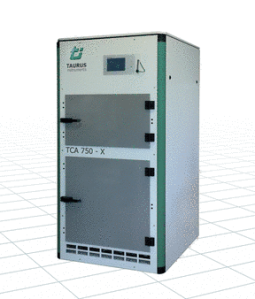 Although cellular glass can have many applications, 99.999999% is going to thermal insulation. A good bench-marking of thermal insulation needs good equipment to measure and well trained operators. In this post, I give a short introduction with emphasis on the assumptions, which are made when a certain thermal conductivity is published.
Although cellular glass can have many applications, 99.999999% is going to thermal insulation. A good bench-marking of thermal insulation needs good equipment to measure and well trained operators. In this post, I give a short introduction with emphasis on the assumptions, which are made when a certain thermal conductivity is published.
Quality control (QC) needs a fast but reliable measurement for a decent quality assurance (QA). Indeed, the more measurements are done, the better the distribution of the thermal conductivity values around the average can be described. This becomes awarded with an improved declared thermal conductivity.
A very fast equipment is the hot wire method. This transient method is measuring in fact the thermal conductivity and volumetric heat capacity. The method is sensitive for only a small area of the sample (a few cm³) and in that way very sensitive to inhomogeneities and contact resistance. For a cellular material with cells on the scale of a mm, this looks not the appropriate method for the QA of cellular glass. On the other hand, it looks like a fine system to gather the thermal data needed to calculate the annealing curve.
 The heat flux meter method (HFM) is a more reliable method because the sensor measures typically up to 30 x 30 cm from the sample and the full thickness is taken into account. Typical samples are measured in a few hours with an accuracy up to 0.5%. The system uses a heat flow sensor, built as a many serially connected thermocouples. A sample is installed between a hot and cold sink. The sensor is mounted on the cold or hot sink or both. Because some heat leak to the outside can not be avoided, the system needs to be calibrated. HFM systems built in a cabinet with a stable and controlled temperature are not dependent on the laboratory conditions and have my favor. They need less calibration and more time is available for the actual measurements.
The heat flux meter method (HFM) is a more reliable method because the sensor measures typically up to 30 x 30 cm from the sample and the full thickness is taken into account. Typical samples are measured in a few hours with an accuracy up to 0.5%. The system uses a heat flow sensor, built as a many serially connected thermocouples. A sample is installed between a hot and cold sink. The sensor is mounted on the cold or hot sink or both. Because some heat leak to the outside can not be avoided, the system needs to be calibrated. HFM systems built in a cabinet with a stable and controlled temperature are not dependent on the laboratory conditions and have my favor. They need less calibration and more time is available for the actual measurements.
Taurus and Netzsch have both reliable systems, when properly calibrated, need about 2 hours to measure a 4 cm thick sample. Both give confident measurements in a bench marking but I would also put some attention on the robustness of the equipment. Measuring cellular glass can be very hard for this kind equipment due to the scratching surfaces and the unavoidable dust.
The quality of a HFM-measurement depends strictly on the quality of the calibration procedure and so on the quality of the calibration samples. It is well known that a calibrated sample changes slightly after each measurement due to thickness changes. Each confident cellular glass producer should have access to a system, which allows a perfect absolute measurement. In that way, confident calibration samples can be used.
 The Guarded Hot Plate method guarantees that all the measured heat flows through the sample and does not escape to the outside. This is done by working with a guard ring, kept on the same temperature as the actual measuring range. This system needs much more time to measure one sample (about 12 hours) but does not need calibration if certified thermocouple wire and self calibrated volt meters are used. Such a complicated system should be able to measure a large temperature range. In that perspective, I am charmed by the GHP 456 Titan® ,if adapted for larger samples.
The Guarded Hot Plate method guarantees that all the measured heat flows through the sample and does not escape to the outside. This is done by working with a guard ring, kept on the same temperature as the actual measuring range. This system needs much more time to measure one sample (about 12 hours) but does not need calibration if certified thermocouple wire and self calibrated volt meters are used. Such a complicated system should be able to measure a large temperature range. In that perspective, I am charmed by the GHP 456 Titan® ,if adapted for larger samples.
The very small error of the GHP-system is calculated with finite elements by L. Troussart in “Analysis of errors in Guarded Hot Plate measurements as compiled by the finite element method”.

Pingback: Heat pipe effect in wet permeable insulation? | BELGLAS BVBA